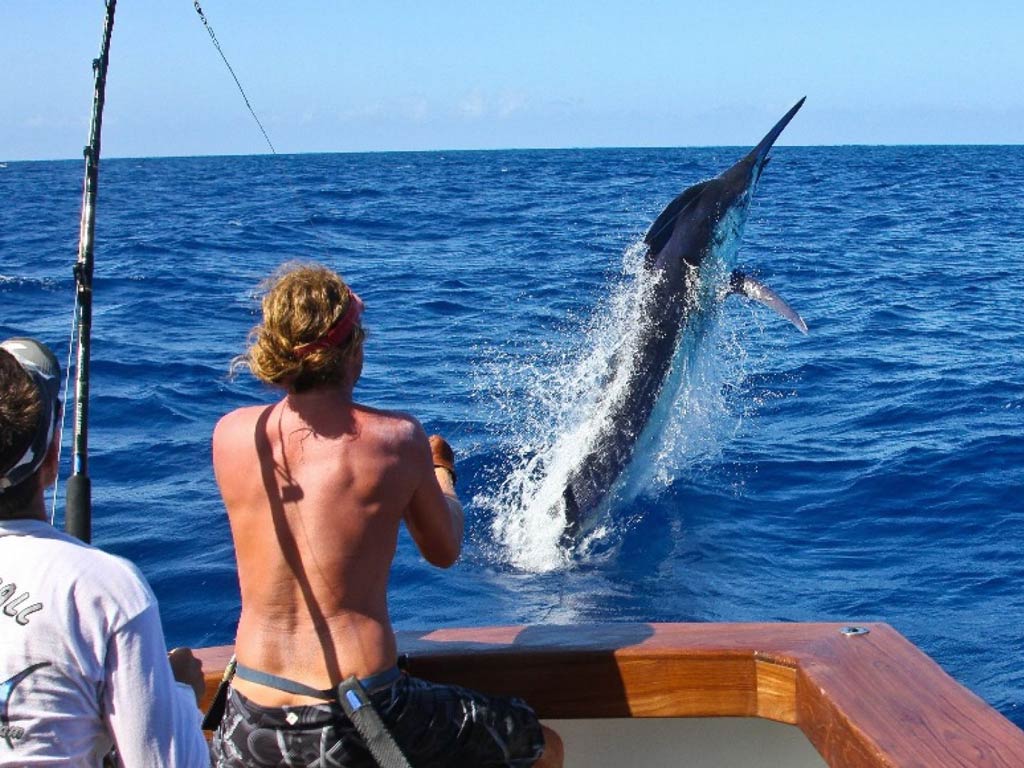Marlin fishing is a thrilling and challenging pursuit that attracts anglers from around the world. Known for their incredible strength, speed, and acrobatic displays, marlin are among the most prized game fish. Whether you’re a seasoned angler or a newcomer to big game fishing, these tips can help you target and catch marlin effectively.
Choosing the Right Location
Marlin are found in warm ocean waters, typically near the equator. Popular marlin fishing destinations include the waters off Hawaii, Mexico, Australia, and the Caribbean. Research the best times of year for marlin fishing in your chosen location, as marlin tend to migrate and follow specific patterns based on water temperature and food availability.
Selecting the Appropriate Gear
Marlin fishing requires heavy-duty gear designed to handle the power and size of these magnificent fish. Invest in high-quality trolling rods and reels with a high line capacity, capable of holding at least 80-pound test line. Braided lines offer strength and durability, while fluorocarbon leaders provide abrasion resistance. Use large, durable hooks, typically 8/0 to 12/0, to withstand the force of a marlin’s strike.
Bait and Lures
Live bait, such as mackerel, bonito, and skipjack tuna, is highly effective for marlin fishing. Rig live bait with circle hooks to increase hookup rates and reduce injury to the fish. Artificial lures, such as skirted trolling lures and large plugs, can also attract marlin. Choose lures with vibrant colors and reflective surfaces to mimic the appearance of prey fish. Experiment with different lure sizes and styles to find what works best in your fishing area.
Trolling Techniques
Trolling is the primary method for targeting marlin. Set up a spread of multiple lines at varying distances and depths to cover a wide area. Use outriggers to keep lines separated and reduce tangling. Maintain a trolling speed of 6 to 9 knots, adjusting based on sea conditions and marlin behavior. Watch for signs of marlin activity, such as birds diving, baitfish schooling, or surface splashes.

Setting the Hook and Fighting the Fish
When a marlin strikes, resist the urge to set the hook immediately. Allow the fish to take the bait and turn before gently applying pressure to set the hook. Once hooked, be prepared for a long and intense battle. Use your body to leverage the rod and reel, conserving energy for the fight. Marlin often make powerful runs and acrobatic jumps, so stay alert and maintain steady pressure on the fish.
Tag and Release
Marlin are often caught for sport and conservation, with many anglers practicing tag and release. Use a tagging kit to mark the fish for research and tracking purposes. Handle the marlin carefully to minimize stress and injury, and release it as quickly as possible. Proper tag and release techniques help preserve marlin populations for future generations of anglers.
Safety Considerations
Safety is paramount when marlin fishing. Always wear a harness and fighting belt to distribute the strain of battling a marlin. Keep a clear deck to prevent tripping hazards, and communicate effectively with your crew. Be prepared for changing weather conditions and have a plan in place for emergencies.
By following these tips and preparing thoroughly, you can increase your chances of successfully targeting and catching marlin, experiencing the thrill of battling one of the ocean’s most formidable predators.
Image: FishingBooker





